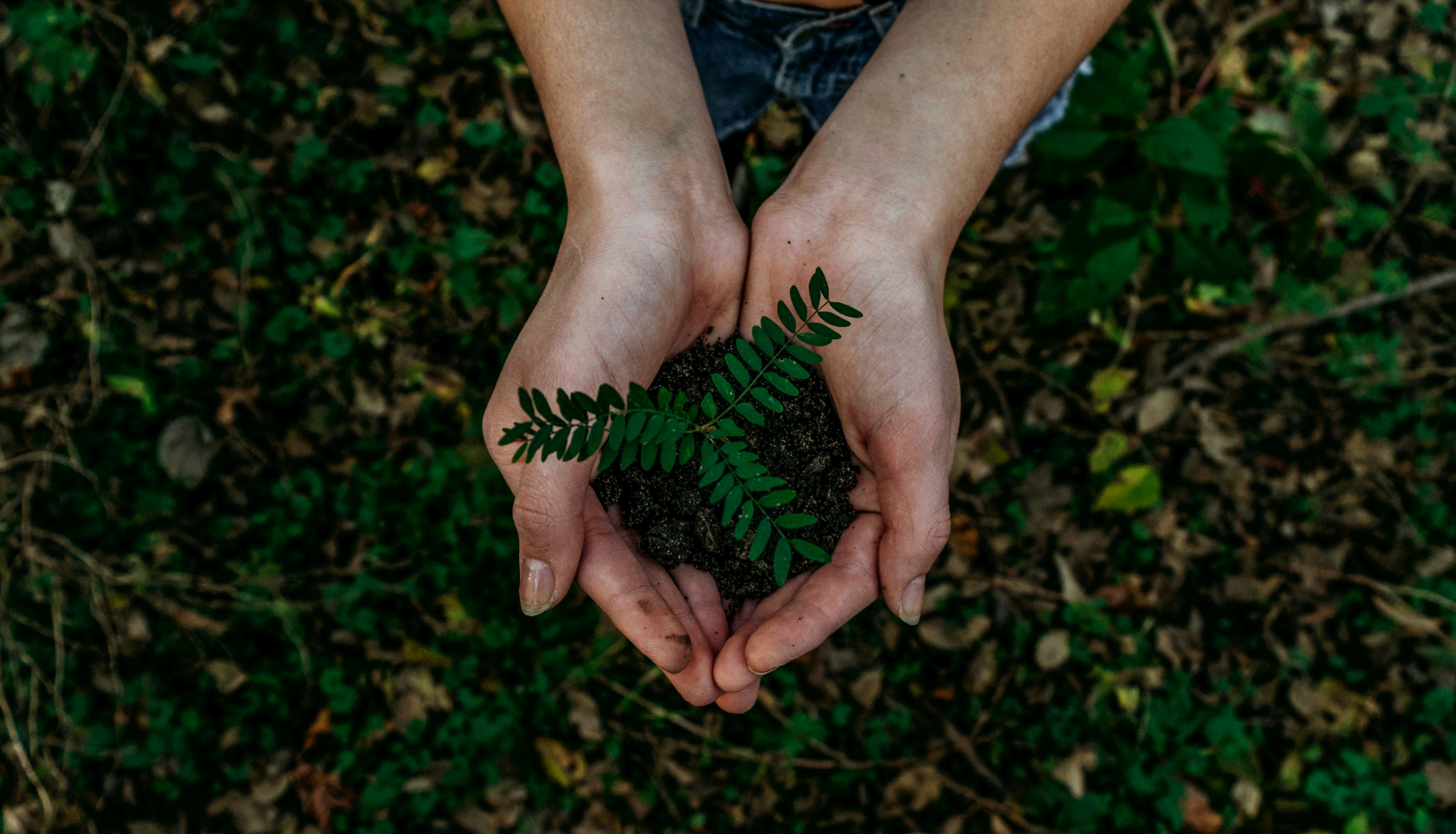Sustainable Living Practices: Practical Steps Toward an Eco-Friendly Lifestyle
Malik Mohsin Saleem Khan
November 25, 2023 · 16 min read

Introduction
Sustainable living represents a growing movement toward lifestyle choices that reduce environmental impact while often improving personal wellbeing and financial health. As climate change, resource depletion, and pollution increasingly affect our planet, individual actions—when adopted collectively—offer meaningful pathways toward more sustainable systems and communities.
This comprehensive guide explores practical, evidence-based approaches to sustainable living that go beyond simplistic "eco-tips" to address the underlying systems and habits that determine our environmental footprint. From everyday consumption choices to longer-term lifestyle decisions, discover actionable strategies that balance environmental responsibility with personal wellbeing and practical constraints. Whether you're just beginning to explore sustainability or looking to deepen existing practices, this guide offers realistic pathways toward more intentional, lower-impact living.
Understanding Sustainability: Beyond Green Consumerism
Effective sustainable living requires understanding the complex systems that shape our environmental impact and the principles that can guide meaningful change. This foundational knowledge helps distinguish substantive actions from superficial "greenwashing" while providing context for personal choices.
The environmental triple crisis of climate change, biodiversity loss, and pollution represents interconnected challenges requiring systemic responses. Climate change, driven primarily by greenhouse gas emissions from fossil fuel use, threatens to destabilize global systems through rising temperatures, extreme weather events, and sea level rise. Biodiversity loss—occurring at 1,000 times the natural background rate—undermines ecosystem services essential for human survival, from pollination to water purification. Pollution, particularly from plastics, synthetic chemicals, and excess nutrients, contaminates environments worldwide, affecting wildlife and human health. These crises share common drivers in unsustainable production and consumption patterns that prioritize short-term economic growth over ecological limits.
The concept of ecological footprint provides a framework for understanding individual impact, measuring how much biologically productive land and water area an individual or population requires to produce resources and absorb wastes. The average American's ecological footprint is approximately 8.1 global hectares, more than five times what would be sustainable if all humans consumed at this level. This footprint analysis reveals that certain consumption categories—particularly transportation, housing, and food—typically generate the largest environmental impacts, suggesting where personal changes might be most meaningful.
Sustainability principles that can guide effective action include systems thinking (recognizing interconnections between environmental, social, and economic factors), precautionary approaches (avoiding potential harm even without complete scientific certainty), and sufficiency (distinguishing between needs and wants to establish "enough" rather than pursuing endless growth). These principles help navigate the complex landscape of sustainable living choices by providing criteria for evaluating potential actions beyond simplistic metrics.
The limitations of individual action within current systems require both personal changes and collective engagement. While individual choices matter—particularly in high-consuming populations—structural constraints often limit the impact of personal decisions alone. Effective sustainable living therefore combines direct lifestyle changes with participation in collective efforts to transform systems, from community initiatives to policy advocacy. This balanced approach recognizes that neither individual purism nor waiting for perfect systems offers adequate responses to urgent environmental challenges.
Mindful Consumption: Needs, Wants, and Wellbeing
Sustainable consumption involves not just choosing "greener" products but fundamentally reconsidering our relationship with material goods and the true sources of wellbeing. This mindful approach addresses the root causes of overconsumption while often enhancing quality of life.
The psychological drivers of consumption often extend beyond functional needs to include identity expression, emotional regulation, status signaling, and habitual shopping. Research in consumer psychology shows that many purchases provide only temporary satisfaction followed by adaptation (the "hedonic treadmill"), explaining why increased consumption often fails to deliver lasting happiness despite significant environmental costs. Understanding these mechanisms helps interrupt unconscious consumption patterns and redirect resources toward more satisfying and sustainable uses.
"The price of anything is the amount of life you exchange for it." — Henry David Thoreau
Practical approaches to reducing unnecessary consumption include implementing waiting periods before non-essential purchases (the "30-day rule"), practicing gratitude for existing possessions, tracking spending to increase awareness, and finding non-material sources of satisfaction and identity. These practices help distinguish between genuine needs and conditioned wants while reducing exposure to advertising that artificially creates desires. The goal isn't deprivation but rather intentionality—choosing consumption that genuinely enhances wellbeing while minimizing environmental harm.
When purchases are necessary, sustainable product selection involves considering multiple factors beyond simple "eco-friendly" labels. Key considerations include durability and repairability (products designed to last and be maintained), material composition (renewable, recycled, or low-impact materials), production conditions (including labor practices and pollution controls), and end-of-life management (recyclability, biodegradability, or take-back programs). Third-party certifications like Energy Star, Forest Stewardship Council, and Fair Trade provide some verification of environmental and social claims, though no certification system is perfect.
The sharing economy and collaborative consumption offer alternatives to individual ownership for occasionally-used items. Tool libraries, toy lending programs, clothing rental services, and community-owned equipment reduce resource use while often building community connections. Similarly, second-hand markets through thrift stores, online platforms, and local exchanges extend product lifespans while reducing manufacturing impacts and typically saving money. These approaches shift focus from ownership to access, meeting needs with fewer resources while often creating social benefits.
Sustainable Food Choices: Beyond Simple Rules
Food represents one of our most significant environmental impacts while offering daily opportunities for more sustainable choices. Rather than following oversimplified guidelines, effective food sustainability involves understanding key principles and applying them within personal circumstances.
The environmental impacts of food systems extend far beyond carbon footprint to include water use, land conversion, biodiversity loss, soil degradation, and pollution. Animal products generally create higher impacts across these dimensions, with beef and dairy typically generating the largest footprints due to methane emissions, feed production, and land use requirements. However, production methods matter significantly—pasture-raised livestock integrated into appropriate ecosystems can support biodiversity and carbon sequestration, while some plant crops grown with intensive chemical inputs and exploitative labor practices create substantial harms despite being "plant-based."
Food waste reduction offers perhaps the most universally applicable sustainability strategy, addressing the estimated 30-40% of food that goes uneaten. Practical approaches include meal planning before shopping, understanding date labels (which often indicate quality rather than safety), proper food storage, creative use of leftovers, and composting unavoidable scraps. These practices reduce both environmental impacts and food costs while often improving nutrition through more intentional eating.
- Meal planning strategies: Create flexible plans based on what's already in your kitchen, shop with specific meals in mind, and prepare perishable ingredients soon after purchase
- Storage optimization: Learn proper storage methods for different foods, use clear containers to maintain visibility, and implement a "eat first" section in your refrigerator
- Creative repurposing: Transform aging produce into soups, smoothies, or baked goods; use vegetable scraps for stocks; and incorporate leftovers into new meals
Dietary shifts toward more plants and less resource-intensive animal products generally reduce environmental impact while often improving health outcomes. However, sustainable diets look different across geographic and personal contexts. Rather than pursuing perfect purity or following rigid rules, focus on directional improvements: more whole, minimally processed foods; more plants; appropriately-sized portions; and animal products chosen with attention to production methods when consumed. This flexible approach accommodates different nutritional needs, cultural traditions, and access constraints while still significantly reducing environmental footprint.
Local and seasonal eating offers environmental benefits through reduced transportation emissions and support for regional food systems, though "food miles" typically represent a smaller portion of overall impact than production methods. The most sustainable approach combines attention to both how and where food is produced, prioritizing environmentally-sound practices alongside appropriate seasonality and regionality. Farmers markets, community supported agriculture (CSA) programs, and direct relationships with producers provide opportunities to support sustainable local food systems while often accessing fresher, more flavorful options.
Sustainable Home and Energy Practices
Our homes represent centers of resource consumption through energy use, water consumption, and material flows. Sustainable home practices range from simple habit changes to longer-term investments that reduce environmental impact while often improving comfort and reducing costs.
Energy efficiency improvements offer some of the most cost-effective sustainability interventions, often paying for themselves through reduced utility bills while decreasing carbon emissions. The "energy hierarchy" provides a framework for prioritizing actions: first reduce demand through behavior changes and efficiency improvements, then meet remaining needs with renewable sources. Simple efficiency measures include LED lighting (using 75% less energy than incandescent bulbs), programmable thermostats (reducing heating/cooling when spaces are unoccupied), proper insulation and weatherstripping to prevent thermal losses, and Energy Star appliances. More substantial investments like high-efficiency HVAC systems, improved insulation, and energy-efficient windows typically offer positive financial returns over their lifespans while significantly reducing environmental impact.
Renewable energy adoption has become increasingly accessible through falling technology costs and flexible implementation options. Residential solar installations have decreased in cost by over 70% in the past decade, making them economically viable in many regions with appropriate incentives and net metering policies. For those unable to install their own systems due to renting, shading, or financial constraints, community solar programs and renewable energy certificates (RECs) provide alternatives for supporting clean energy development. The environmental benefits of these approaches depend significantly on the existing electricity mix in your region, with greater impact in areas currently dependent on fossil fuels.
Water conservation combines simple habit changes with technological improvements to reduce consumption of this essential resource. Low-flow fixtures for showers, faucets, and toilets can reduce water use by 30-50% without affecting functionality. Landscape choices significantly impact outdoor water use, with native plants typically requiring minimal supplemental irrigation once established. Rainwater harvesting systems capture precipitation for landscape irrigation, reducing both water consumption and stormwater runoff. These approaches become increasingly important as climate change exacerbates water scarcity in many regions.
Waste reduction strategies address the materials flowing through our homes, aiming to minimize both resource consumption and disposal impacts. The "refuse, reduce, reuse, recycle, rot" hierarchy provides guidance for prioritizing actions, with prevention preferred over management. Practical approaches include refusing unnecessary items (particularly single-use plastics), reducing consumption of short-lived products, reusing durable alternatives, recycling according to local guidelines, and composting organic materials. While recycling receives significant attention, its effectiveness varies widely by material type and local systems, making reduction and reuse generally more impactful strategies.
Getting Started: Creating Your Sustainable Living Plan
Transitioning toward more sustainable living works best as an intentional process rather than a series of random changes. This structured approach helps prioritize actions with the greatest impact while creating lasting habits aligned with your values and circumstances.
- Assess your current impact: Begin by understanding your environmental footprint to identify priority areas:
- Use online calculators like the Global Footprint Network's tool to estimate your overall ecological footprint
- Track resource consumption through utility bills, transportation records, and spending patterns
- Conduct a waste audit by monitoring what you discard over a typical week
- Note areas where you already practice sustainability as well as opportunities for improvement
- Identify high-impact opportunities: Focus initial efforts on changes that offer the greatest environmental benefit relative to effort:
- Transportation choices, particularly reducing air travel and car dependence where alternatives exist
- Home energy use, through both efficiency improvements and renewable sources
- Food choices, especially reducing waste and shifting toward more plant-centered eating
- Major purchases and investments, including housing, vehicles, and financial decisions
- Create a personalized implementation plan: Develop a realistic strategy based on your specific circumstances:
- Distinguish between immediate changes (habits, simple swaps) and longer-term transitions requiring planning
- Consider your constraints and opportunities, including housing situation, location, financial resources, and time
- Identify potential barriers to change and strategies to address them
- Set specific, measurable goals with timeframes rather than vague intentions
- Build sustainable habits gradually: Implement changes in a way that supports long-term adoption:
- Focus on one or two changes at a time rather than attempting complete transformation overnight
- Use habit-stacking techniques, connecting new sustainable practices to existing routines
- Create environmental cues that trigger desired behaviors (visible recycling bins, reusable bags by the door)
- Track progress to maintain motivation and identify successful strategies
- Connect with supportive communities: Engage with others pursuing sustainable living:
- Join local sustainability groups, online communities, or neighborhood initiatives
- Share resources, skills, and equipment to enable more sustainable practices
- Participate in community-level projects that create broader impact
- Find accountability partners who support your sustainable living goals
Remember that sustainable living represents a journey rather than a destination, with continuous learning and adaptation rather than perfect purity. Focus on progress over perfection, celebrating improvements while remaining open to new information and approaches. This growth mindset prevents the discouragement that can result from unrealistic expectations while supporting ongoing development of more sustainable practices aligned with your evolving understanding and circumstances.
The Evolving Landscape of Sustainable Living
Sustainable living continues to evolve in response to changing technologies, cultural shifts, and environmental understanding. Awareness of these emerging trends helps navigate the dynamic landscape of sustainability practices and opportunities.
The climate adaptation dimension of sustainable living has gained increasing attention as climate impacts become more evident. Beyond reducing emissions (mitigation), adaptation involves preparing for and responding to climate changes already underway. For individuals, this might include considering climate resilience in housing choices, landscaping with drought-tolerant plants in areas facing increased water stress, or developing community mutual aid networks for extreme weather events. These adaptation strategies complement rather than replace mitigation efforts, recognizing that both approaches are necessary in our current climate reality.
Regenerative approaches extend beyond sustainability's focus on reducing harm to actively restoring ecological systems. This shift from "doing less bad" to "doing more good" appears across domains from agriculture (regenerative farming practices that build soil health) to consumer goods (products designed to biodegrade into beneficial rather than neutral compounds) to community development (projects that enhance local ecosystems while meeting human needs). These regenerative practices often create multiple benefits simultaneously, addressing environmental challenges while improving resilience and wellbeing.
Technology's role in sustainable living continues to evolve, with digital tools both enabling new practices and creating new challenges. Smart home systems can optimize resource use through automated efficiency measures, while apps facilitate sharing economy participation, sustainable purchasing decisions, and community connections. However, technology itself carries environmental footprints through manufacturing impacts, energy use, and electronic waste. The most promising approaches integrate appropriate technology into broader sustainability strategies rather than relying on technical solutions alone.
Conclusion
Sustainable living ultimately represents not deprivation but a more intentional relationship with resources, consumption, and wellbeing. By understanding the systems that shape our environmental impact and making thoughtful choices within our spheres of influence, we can create lifestyles that better align with ecological realities while often enhancing quality of life through greater mindfulness, connection, and purpose.
The most effective approach combines individual action with collective engagement, recognizing that personal choices matter while acknowledging the need for broader systemic change. Rather than placing these approaches in opposition, sustainable living at its best integrates them—using personal practices as foundations for wider advocacy, building communities that support better choices, and creating lived examples of alternative possibilities.
Perhaps most importantly, sustainable living invites us to reconsider what truly constitutes a good life—shifting focus from material accumulation toward experiences, relationships, and meaning that generate wellbeing with lower environmental costs. This recalibration offers the possibility of lives that are not just more sustainable but more satisfying, connected, and aligned with our deeper values. In this sense, the journey toward sustainability becomes not just an environmental imperative but an opportunity to create more authentic and fulfilling ways of living.
Frequently Asked Questions
Isn't individual action too small to make a difference with global environmental problems?
Individual actions create impact through multiple pathways beyond direct resource reduction. First, high-consuming individuals (particularly in wealthy countries) have disproportionate footprints, making their changes more significant than average. Second, personal practices demonstrate demand for sustainable options, influencing market development and policy support. Third, visible sustainable choices help normalize these behaviors, creating social diffusion effects. Finally, personal engagement often leads to collective action through community initiatives, political participation, and workplace influence. The most effective approach combines individual changes with support for systemic transformation rather than viewing these as competing alternatives.
How do I prioritize sustainable living changes when there are so many possible actions?
Focus first on high-impact areas—typically transportation, housing, food, and major purchases—rather than minor issues that receive disproportionate attention like plastic straws. Within these categories, consider both your current footprint (where you have the most room for improvement) and your specific constraints and opportunities. The most sustainable changes are those you can maintain long-term, so consider your personal circumstances, values, and resources when prioritizing actions. Remember that perfect sustainability isn't possible within current systems, making progress and continuous improvement more realistic goals than flawless environmental purity.
How can I practice sustainable living on a limited budget?
Many sustainable practices save money rather than requiring additional expenditure: reducing consumption, minimizing food waste, conserving energy and water, choosing durable products, and participating in sharing economies all typically reduce costs. For changes requiring initial investment, prioritize those with financial returns (like energy efficiency improvements) and explore assistance programs, tax incentives, and community resources that make these more accessible. Remember that sustainability represents a journey rather than an immediate transformation—implement affordable changes first while planning for more substantial shifts as resources allow.
Malik Mohsin Saleem Khan
Founder
Author bio information


